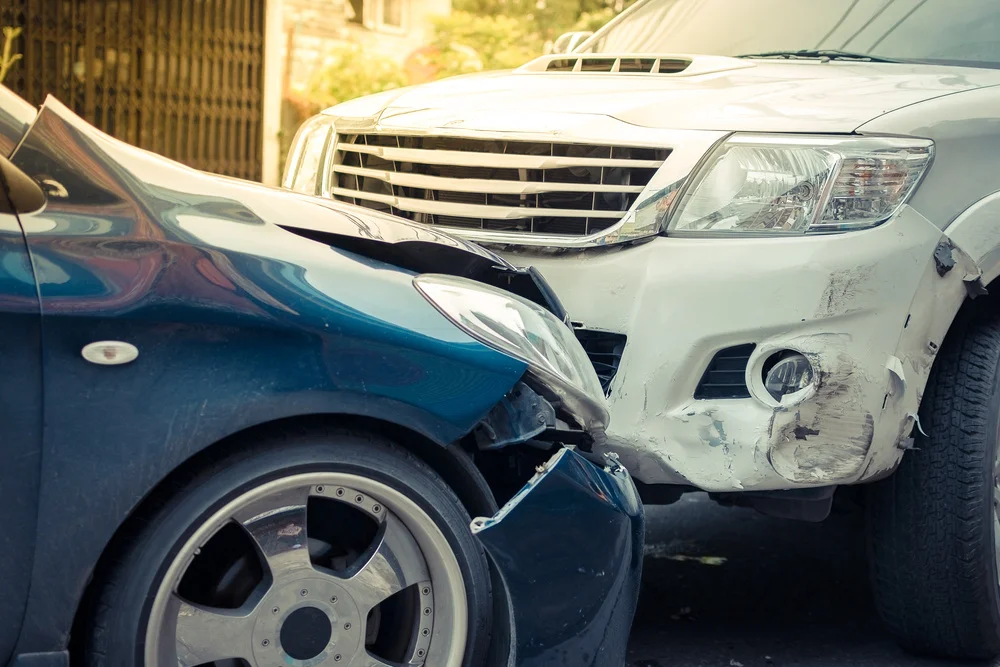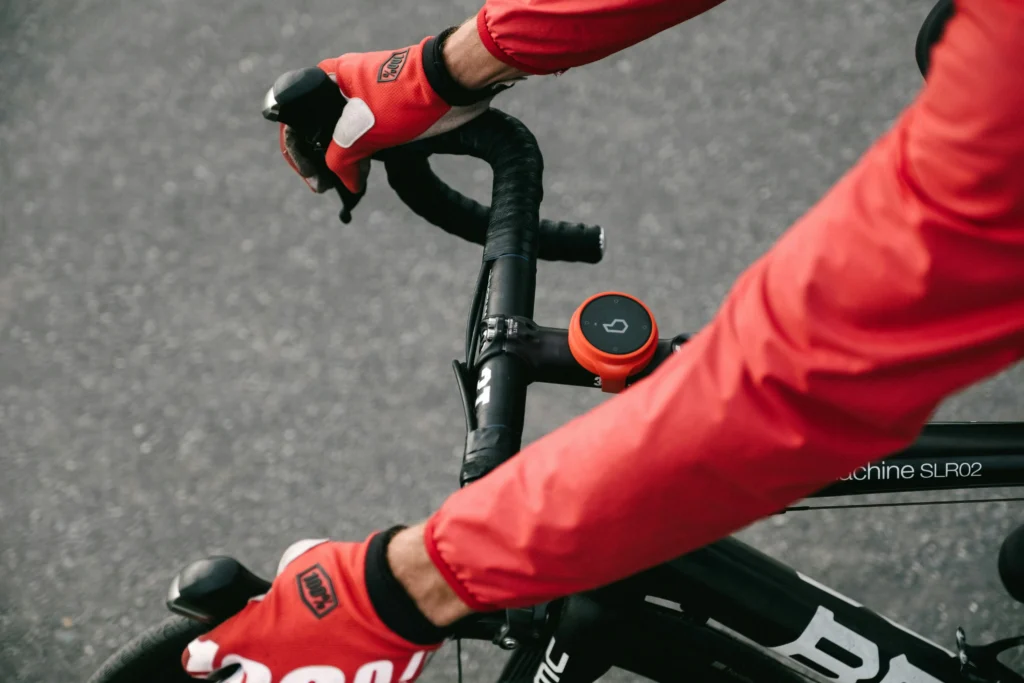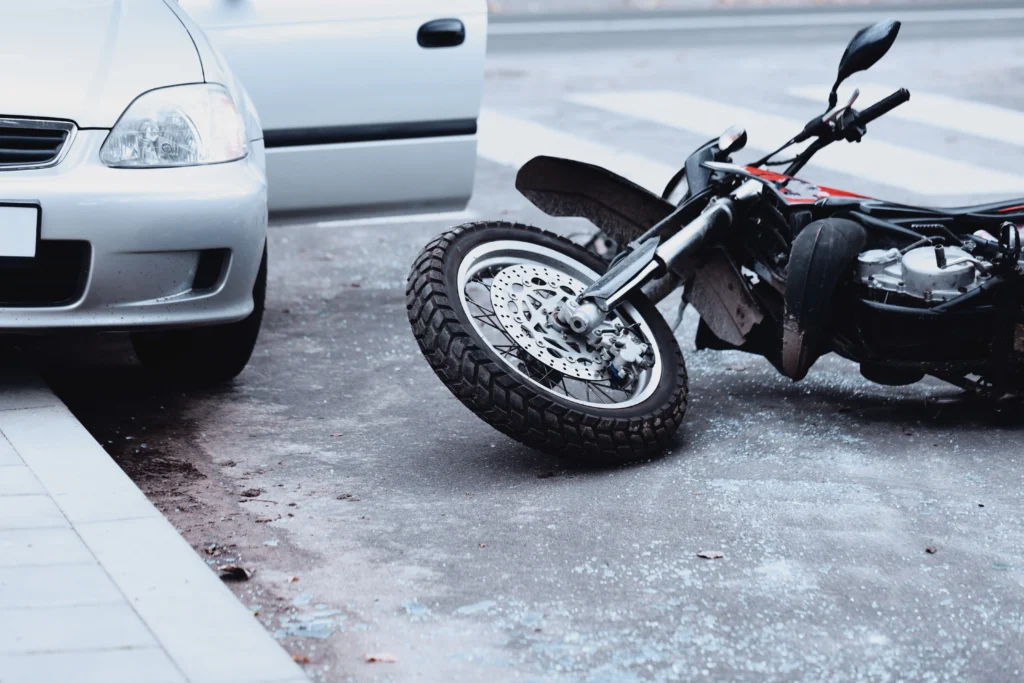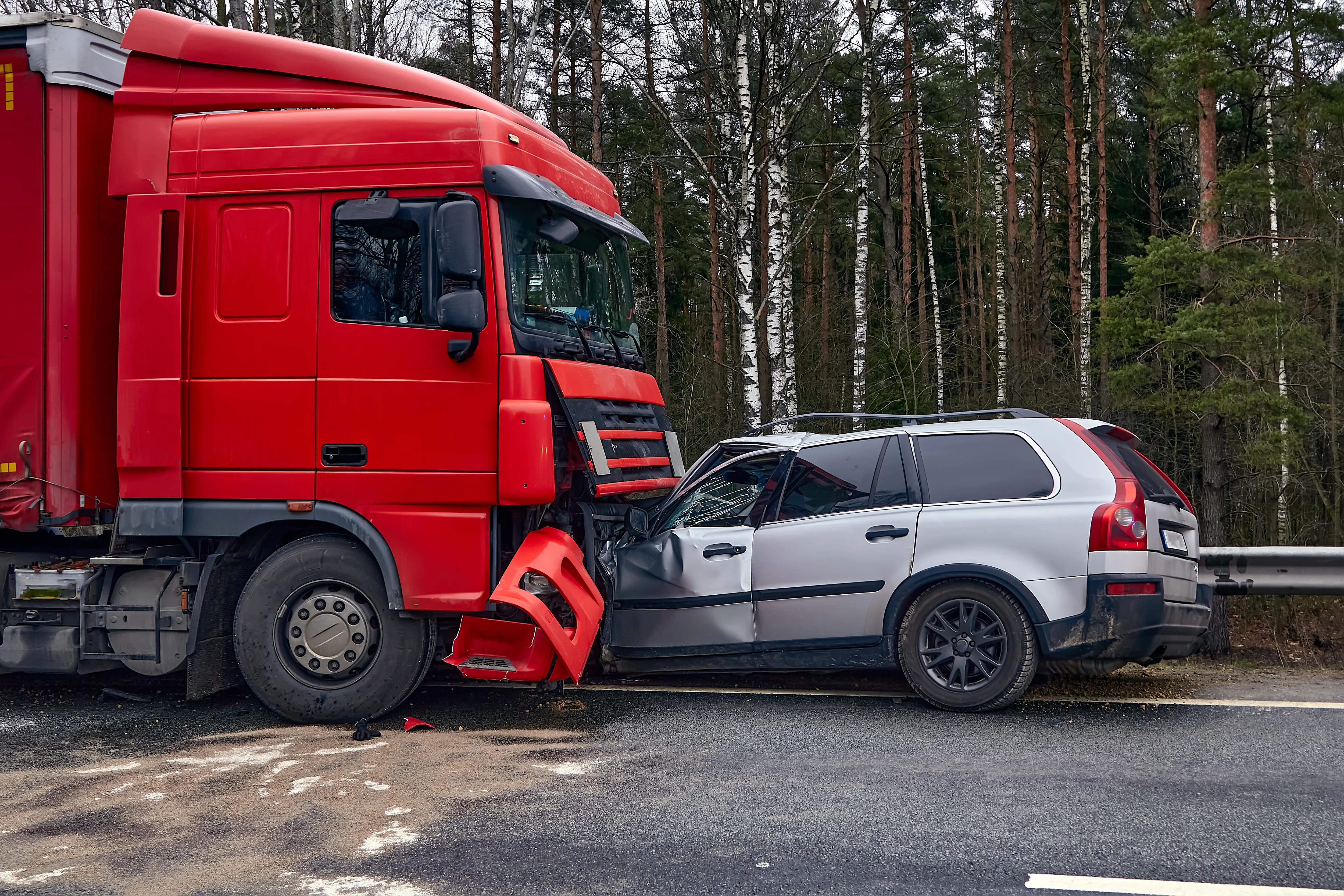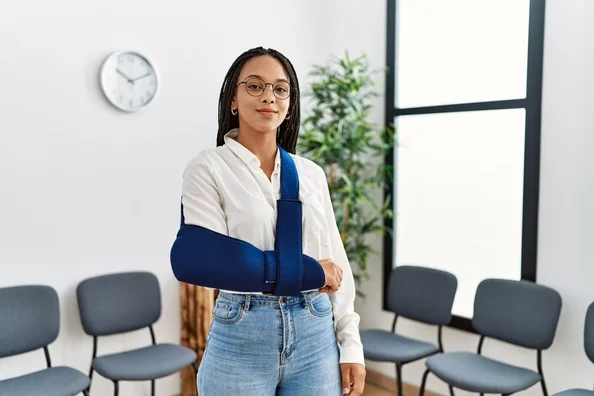Renton Bicycle Injury Lawyers
Bicyclists in Renton face serious risks every time they take to the road. Whether riding to work, exercising, or simply enjoying a weekend ride, cyclists must navigate dangerous intersections, inattentive drivers, and poorly designed infrastructure. Unfortunately, when a vehicle collides with a bicycle, the results are often catastrophic. Injuries are frequently severe, and victims face long recovery times, lost income, and mounting medical bills.
If you or a loved one suffered injuries in a Renton bicycle accident, you may be entitled to significant compensation. Washington law allows injured cyclists to pursue legal claims against negligent drivers, government agencies, or other at-fault parties. However, these cases are rarely simple. Success requires evidence, strategy, and an attorney who understands how to hold insurers and wrongdoers accountable.
At Bernard Law Group, we fight for injured bicyclists throughout Renton and King County. Our legal team has recovered millions for Washington clients, and we’re ready to help you seek justice. Contact us today at (206) 752-2233 or visit our contact page for a free consultation. We do not charge any legal fees unless we win your case.
Common Causes of Bicycle Accidents in Renton
Bicycle accidents in Renton happen for a wide range of reasons, but most share one common theme: preventable negligence. Cyclists are vulnerable road users, and even a minor driver error can lead to devastating consequences. In Renton, bicycle collisions often occur at intersections, in high-traffic corridors like Rainier Avenue South or Benson Road South, or on stretches of road where infrastructure fails to support safe cycling. Understanding what causes these accidents is essential for both prevention and legal accountability.
According to the National Highway Traffic Safety Administration, nearly 1,000 bicyclists die in traffic crashes annually, and thousands more suffer serious injuries. These statistics underscore the importance of identifying and addressing the root causes of bicycle collisions in urban areas like Renton.
Distracted Driving Around Bicyclists
Driver distraction remains one of the most dangerous threats to cyclists in Renton. Whether texting, talking on the phone, or adjusting in-vehicle systems, distracted drivers fail to notice bicyclists until it’s too late. Even a two-second lapse in attention can result in a fatal crash.
Washington law prohibits handheld cell phone use while driving, yet many motorists continue to violate this rule. The Washington Traffic Safety Commission reports that distraction is a contributing factor in nearly 30 percent of statewide crashes. For bicyclists, the consequences of a distracted driver’s actions can be life-altering.
In areas like South Grady Way or Oakesdale Avenue Southwest, where traffic density is high and shoulder space is limited, even a brief distraction can lead to disaster. Cyclists may be hit while riding in a bike lane, crossing at an intersection, or even while stopped at a red light.
To learn more about how distraction affects road safety, the Centers for Disease Control and Prevention (CDC) offers extensive research and prevention strategies.
Failure to Yield at Intersections
Intersections are particularly dangerous for Renton bicyclists. Motorists often fail to yield the right of way to cyclists, even when the law clearly requires it. This is especially true at unsignalized intersections or when drivers make left-hand turns without properly checking for oncoming bicycles.
Under the Revised Code of Washington § 46.61.185, drivers must yield to any vehicle, including a bicycle, that is already in the intersection or close enough to pose a hazard. Unfortunately, many drivers do not consider bicycles to be “vehicles” in the traditional sense and behave as if cyclists are invisible.
Failure to yield incidents frequently occur at intersections like Talbot Road South and South 43rd Street or along Northeast Third Street, where limited visibility and driver impatience contribute to collision risk. These crashes often result in side-impact injuries, broken limbs, and head trauma.
The Washington State Department of Transportation (WSDOT) emphasizes the importance of intersection safety and publishes data showing that a high percentage of bicycle collisions involve a motorist’s failure to yield.
Drivers Turning Across Bicycle Paths
One common type of failure-to-yield crash involves a driver making a left turn across the path of a bicyclist going straight. This type of collision is especially common at signalized intersections where the driver has a green light but fails to see or respect the cyclist’s right of way.
The Federal Highway Administration warns that “left cross” collisions are a leading cause of urban bicycle fatalities. These incidents are preventable when drivers check blind spots, use turn signals, and obey all traffic control devices.
Right Hook Collisions
Another common hazard is the “right hook,” which happens when a driver makes a right turn directly into a cyclist traveling in the same direction. These crashes occur when the motorist overtakes a cyclist and then cuts across the bike lane to make a turn. Drivers often misjudge the speed of the cyclist or fail to check mirrors before merging into the bike lane.
The League of American Bicyclists provides safety education on how to avoid right-hook crashes and urges cities to implement protected bike lanes and improved signage to reduce this risk.
Speeding and Aggressive Driving
Speeding significantly increases the severity of any bicycle accident. In Renton, many arterial roads like Central Avenue South, Southwest Sunset Boulevard, and Benson Drive South are plagued by drivers exceeding the posted speed limit. When a vehicle strikes a bicyclist at high speed, the results are often catastrophic or fatal.
The National Safety Council confirms that higher speeds result in longer stopping distances and reduced reaction time, making it more difficult for drivers to avoid hitting a cyclist. Speeding also increases the energy transfer during a crash, which translates to more serious injuries for the unprotected rider.
Aggressive driving behaviors, such as tailgating, weaving through traffic, or using bike lanes as turn lanes also pose major risks. Cyclists may be sideswiped, forced off the road, or intimidated into making unsafe maneuvers to avoid confrontation.
The Washington State Patrol regularly issues advisories on the dangers of speeding and aggressive driving, especially in areas with frequent bicycle and pedestrian activity.
Dangerous Road Conditions and Infrastructure Failures
In many parts of Renton, unsafe road design contributes directly to bicycle collisions. Poorly marked bike lanes, faded crosswalks, potholes, and a lack of street lighting all increase the likelihood of an accident. These issues are especially prevalent on older roads and those that serve as major connectors between residential and commercial districts.
One significant problem is the lack of physical separation between bike lanes and traffic. In many areas, painted lines are the only barrier between a cyclist and high-speed vehicles. When cars drift into bike lanes due to distraction or poor road maintenance, the consequences can be deadly.
The National Association of City Transportation Officials (NACTO) advocates for protected bike infrastructure as a proven way to reduce crashes. Their research shows that protected bike lanes reduce injury risk by as much as 90 percent.
Inadequate Lighting and Visibility Hazards
Low visibility is another common factor in Renton bicycle accidents. Many streets, especially near industrial zones or older neighborhoods, suffer from poor lighting conditions. This makes it difficult for drivers to spot cyclists, particularly during early morning or evening commutes.
Street lamps are often broken, missing, or spaced too far apart to provide adequate illumination. In high-risk corridors like Central Avenue South, this lack of lighting can be deadly. Cyclists using front and rear lights may still be virtually invisible to speeding drivers in these poorly lit areas.
The Federal Highway Administration has published guidelines showing that improved nighttime visibility can significantly reduce crash rates.
Road Debris and Surface Hazards
Bicycles are uniquely vulnerable to roadway debris. Loose gravel, broken glass, and potholes pose serious threats, especially when cyclists must swerve to avoid them. If the cyclist swerves into traffic or crashes as a result of the debris, the outcome can be devastating.
The City of Renton’s Public Works Department accepts reports of unsafe road conditions, but repairs are often delayed or deprioritized. When maintenance lapses lead to a crash, government entities may share legal responsibility for resulting injuries.
Types of Injuries Suffered in Renton Bicycle Accidents
Bicycle accidents in Renton often result in severe, long-lasting injuries. Cyclists are especially vulnerable because they lack the protection of a vehicle’s steel frame, airbags, or seatbelts. When struck by a car or thrown from a bike, the human body absorbs the full force of the impact. Injuries sustained in these crashes can range from painful road rash to life-threatening brain trauma, and the consequences frequently extend beyond physical recovery into emotional and financial hardship.
According to the Centers for Disease Control and Prevention (CDC), more than 130,000 bicyclists suffer injuries in U.S. traffic crashes each year. Many of these injuries occur in urban areas like Renton, where cyclists’ exposure to vehicle traffic is high.
Traumatic Brain Injuries and Concussions
Head injuries are among the most common and dangerous outcomes of a bicycle collision. Even when wearing a helmet, a cyclist can suffer a concussion or a more serious traumatic brain injury (TBI) upon impact with a vehicle or the pavement.
Symptoms of a concussion may include headaches, dizziness, confusion, memory problems, and sensitivity to light. More severe TBIs can result in long-term cognitive deficits, personality changes, speech impairment, and loss of motor function. Recovery may require extensive medical care, rehabilitation, and lifestyle changes.
The National Institute of Neurological Disorders and Stroke (NINDS) reports that bicycle crashes are a leading cause of nonfatal brain injuries in the U.S., especially among children and young adults. In Renton, busy roadways like Benson Road South and Logan Avenue North are hotspots for TBI-causing collisions due to traffic density and poor visibility.
When Helmets Fail to Prevent Injury
Although bicycle helmets reduce the risk of brain injury, they do not eliminate it. High-speed impacts, particularly those involving larger vehicles like SUVs or trucks, can overwhelm helmet protection. Additionally, improper helmet fit or damage to the helmet may reduce its effectiveness.
The Consumer Product Safety Commission (CPSC) provides important guidelines on helmet selection and usage. However, even perfect compliance cannot fully prevent brain injuries in violent crashes, which is why driver accountability and safe infrastructure are so critical.
Fractures and Broken Bones
Broken bones are extremely common in bicycle accidents. These injuries usually result from direct impact with a vehicle or from the cyclist being thrown from the bike onto a hard surface. Fractures can range from simple breaks that require a cast to complex compound fractures that need surgical intervention.
The most frequently broken bones in bicycle crashes include the clavicle (collarbone), wrist, arm, ankle, and ribs. Cyclists often instinctively try to break their fall with their hands, leading to wrist and forearm fractures. In more serious cases, spinal fractures or pelvic fractures can occur, resulting in permanent disability.
According to the American Academy of Orthopaedic Surgeons (AAOS), fracture treatment often involves months of immobilization, physical therapy, and pain management. When the injuries are severe or involve multiple broken bones, long-term functional limitations may follow.
Shoulder and Collarbone Injuries
Clavicle fractures are especially prevalent in Renton bicycle accidents. This bone is vulnerable because of its location and the way cyclists land when ejected from their bikes. These injuries can cause sharp pain, swelling, and difficulty moving the arm. Surgery is sometimes necessary if the bone breaks in more than one place or pierces the surrounding tissue.
Wrist and Hand Fractures
Hand and wrist injuries not only cause pain but also limit a person’s ability to work, drive, and perform daily tasks. Cyclists often need to wear braces or undergo surgery to repair crushed or dislocated joints. Recovery can be slow and painful, especially if nerve damage is involved.
Spinal Cord Injuries and Paralysis
Few injuries are as devastating as spinal cord trauma. When a vehicle strikes a bicyclist with force or when a rider lands directly on their back, the spine can suffer serious damage. These injuries can lead to partial or full paralysis, depending on the location and severity of the trauma.
Spinal cord injuries are categorized as “complete” or “incomplete,” referring to the extent of lost function. A complete injury may result in permanent paralysis below the site of the damage, while an incomplete injury allows for limited movement or sensation.
The Christopher & Dana Reeve Foundation offers detailed resources for those living with spinal cord injuries, including care options and financial support programs.
Spinal injuries often require emergency surgery, prolonged hospitalization, and ongoing physical therapy. Victims may need assistive devices such as wheelchairs, home modifications, and round-the-clock care. In these cases, a personal injury lawsuit may be the only way to secure the financial resources needed for lifelong care.
Internal Injuries and Organ Damage
Not all bicycle accident injuries are visible. Internal bleeding, organ rupture, and soft tissue trauma can occur without external signs, yet these conditions are life-threatening and require immediate medical attention.
High-speed collisions often cause the rider’s body to slam into the handlebars, pavement, or another object, damaging organs like the spleen, liver, or kidneys. In some cases, internal injuries result in delayed symptoms, which is why anyone involved in a bicycle crash should seek medical evaluation immediately, even if they feel fine at first.
The Mayo Clinic provides in-depth information on the signs and risks of internal bleeding, including lightheadedness, low blood pressure, and abdominal pain.
Doctors often rely on imaging tools such as CT scans or ultrasounds to detect internal damage. Emergency surgery, blood transfusions, and intensive monitoring may be required to stabilize the patient.
Road Rash, Lacerations, and Skin Damage
Road rash occurs when a cyclist’s skin scrapes against pavement during a fall or collision. Although it might sound minor, road rash can involve multiple skin layers and require painful debridement, skin grafts, or infection control. In severe cases, it can leave permanent scarring and reduce mobility in affected limbs.
Renton cyclists are at particular risk of road rash due to poor road conditions and a lack of protective infrastructure. In areas with uneven pavement, gravel, or potholes, even a low-speed crash can produce significant skin injuries.
The American Burn Association outlines treatment protocols for abrasions and friction burns that commonly occur in traffic-related incidents.
Lacerations are also common, especially when cyclists are hit by car mirrors, bumpers, or debris on the road. Deep cuts may sever tendons, damage nerves, or require surgical repair. When the injury occurs on the face or hands, long-term function and appearance can be affected.
Who May Be Liable for a Bicycle Accident in Renton
Determining legal liability in a Renton bicycle accident is often complex. Multiple parties may share responsibility, including negligent drivers, government agencies, and even commercial entities. Washington is a fault-based state, which means the party who causes the accident is legally responsible for compensating the injured person. However, proving fault requires evidence, legal expertise, and a clear understanding of how traffic laws apply to bicyclists.
Whether the crash occurred at an intersection, along Central Avenue South, or on a quiet residential street, establishing liability is the first step toward securing fair compensation. Liability determines who pays for medical expenses, lost income, and other damages. In many cases, more than one party may be held accountable under Washington’s comparative fault law.
Negligent Drivers Who Violate Traffic Laws
In most Renton bicycle accidents, the driver of a motor vehicle is the primary liable party. Drivers have a legal obligation to share the road with cyclists and follow all applicable traffic laws. When they fail to do so and their behavior causes harm, they can be held liable for damages under personal injury law.
Common examples of driver negligence include speeding, distracted driving, failure to yield, and driving under the influence. According to the Washington Department of Licensing, motorists must always yield to cyclists in bike lanes and provide a safe passing distance.
When a driver’s inattention or unlawful behavior causes an accident, the injured cyclist has the right to file a claim against that driver’s insurance policy. In serious cases, a civil lawsuit may also be appropriate.
When Failure to Yield Results in Liability
Washington Revised Code § 46.61.755 and § 46.61.770 outline a cyclist’s right to ride on the roadway and require drivers to yield under specific conditions. If a driver ignores these rules and hits a cyclist who was lawfully using the road, they may be found liable for negligence per se, which is a legal doctrine applied when someone violates a safety law.
Police reports, dashcam footage, and witness statements are often used to prove the driver’s failure to yield or other violations of traffic law.
Distracted or Impaired Driving
Drivers who text, eat, or use GPS devices while driving put everyone at risk, especially vulnerable road users like bicyclists. The National Highway Traffic Safety Administration (NHTSA) confirms that distraction contributes to thousands of serious crashes each year.
If a driver was distracted or under the influence of alcohol or drugs at the time of the crash, they may be liable for punitive damages in addition to standard compensation. This can substantially increase the value of a legal claim.
Government Entities Responsible for Unsafe Roads
In some bicycle crashes, liability may extend to a government agency or municipality. The City of Renton, King County, or the Washington State Department of Transportation could be partially responsible if poor road conditions or negligent infrastructure contributed to the accident.
Examples of government negligence include failing to maintain bike lanes, allowing dangerous potholes to persist, or failing to install adequate signage and lighting in known high-risk areas. In cases like these, the injured cyclist may have a claim against a public entity for creating or allowing a hazardous condition.
The Washington State Office of Risk Management outlines the process for filing a tort claim against a state or local government agency. These claims have strict deadlines, often as short as 60 days, so it’s important to act quickly.
Poorly Maintained Bicycle Infrastructure
When bike lanes are filled with debris, overgrown vegetation, or large cracks, the city may be at fault. Cyclists injured in these conditions may argue that the government failed its duty to provide reasonably safe roadways. Courts will often look at maintenance records, prior complaints, and the city’s response time when evaluating these cases.
Dangerous Intersections and Missing Signage
Some intersections in Renton, including those along Talbot Road and Grady Way, lack proper signage or fail to alert drivers to nearby bike traffic. If an intersection has a history of crashes but no improvements have been made, that may support a claim of negligence against the municipality.
The Federal Highway Administration (FHWA) emphasizes the importance of signage and visibility in reducing cyclist fatalities. If local agencies ignore federal safety recommendations, they may be found legally responsible.
Commercial Drivers and Employers
When a commercial vehicle, such as a delivery van or construction truck, causes a bicycle accident, liability may extend to the employer. Under the doctrine of respondeat superior, companies are legally responsible for the actions of their employees when those actions occur within the scope of employment.
This means that if a Renton cyclist is hit by a delivery driver who was rushing between stops or using a company vehicle, both the driver and the employer could be held liable. Companies may also be liable for negligent hiring, training, or supervision if they knew or should have known that their driver posed a safety risk.
The Occupational Safety and Health Administration (OSHA) requires companies to train employees in safe driving practices. If a company fails to meet these obligations, it may be exposed to significant civil liability in a personal injury claim.
Vehicle Manufacturers and Defective Equipment
In rare cases, a defective vehicle or bicycle part may contribute to a Renton bicycle accident. For example, faulty brakes, defective tires, or a malfunctioning steering system may cause a cyclist to lose control. If the defect occurred due to poor manufacturing or negligent design, the injured party may file a product liability claim against the manufacturer or distributor.
Likewise, if a motor vehicle’s defect, such as brake failure, caused the crash, the cyclist may have a claim against the car’s manufacturer. The National Highway Traffic Safety Administration maintains a database of vehicle recalls and defects that may support this type of claim.
Product liability lawsuits require expert testimony and thorough documentation. However, they can result in significant compensation, particularly if the defect is linked to a known safety issue or subject to a federal recall.
Speak With a Renton Bicycle Accident Lawyer Today
If you or someone you love has been injured in a Renton bicycle accident, you don’t have to navigate the legal process alone. The Bernard Law Group has helped countless Washington families recover compensation after life-altering crashes, and we’re ready to help you, too. Our attorneys understand the laws that protect bicyclists, and we know how to stand up to insurance companies that try to deny or minimize your claim.
Every bicycle accident case deserves careful attention, a strong legal strategy, and aggressive representation. We investigate the crash thoroughly, work with top experts, and fight to recover full compensation for medical bills, lost income, pain and suffering, and future care. Whether your injuries were caused by a negligent driver, unsafe road conditions, or both, we will pursue every avenue for justice.
Call our office today at (206) 752-2233 or visit our contact page to schedule your free consultation. We represent clients in Renton and throughout King County. There are no legal fees unless we win your case. Let us help you take the next step toward recovery and accountability.
Practice Areas
Trust Us With Your Personal Injury Claim
If you or a loved one have been injured, Bernard Law Group will fight for you every step of the way. We will give our all to secure the compensation you rightfully deserve.
Contact usfor a free consultation.
Phone: (206) 312-3908

